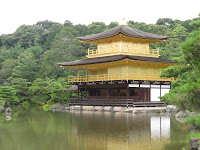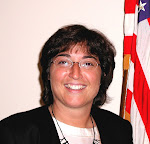






Kobe, Japan - July 24 and 25, 2009
Kobe is the capital city of Hyogo Prefecture and a prominent port city with a population of 1.4 million surrounded by the Rokko Mountains. It is classified as one of Japan’s 17 designated cities and is located on the Seto-Inland Sea. Written records show the city was established around 201 AD. The name comes from “kanbe”, an archaic title for supporters of the city’s Ikuta Shrine. The Great Hanshin earthquake in 1995 diminished much of the city’s prominence as a port city but it remains the country’s 4th busiest container port. It is famous for its Kobe beef and hot springs.
There is a Japanese saying, “If you can’t go to Paris, go to Kobe.”
Japan’s first golf course was established here in 1903.
Exchange rate US$1 = 92 yen (be sure to exchange money as they will not accept dollars)
Day's Limerick: “In Kobe you will find lots of ships and beef which slides over your lips but so much congestion can cause indigestion and add even more to your hips.” Janet Hoult
We took the portliner (the world’s first digitally driven monorail in the world) from the ship direct to Sannomiya train station. I still find it slightly unnerving to not even be able to understand a letter in the alphabet so it took some time to sort out but we found the next train to take us to Shin-Kobe train station to take the bullet train, the Shinkansen, to Kyoto. It was approx. $30 one way and we were there in ½ hour.
We were extremely fortunate to find a brand new hotel across the street from the train station -- Hotel Vista Kyoto, Hachijohguchi www.hotel-vista.jp/kyoto. It was a small room with all we needed, including a fabulous toilet!
Bidet, spray wash, warm seat, music and flushing sounds when you sat down. How exciting to get excited about the toilet in your hotel room!!
Kyoto was Japan’s capital for more than 10 centuries but the real political power was often elsewhere; it is now considered their cultural capital.
We bought the all-day bus pass for 500 yen and were off in the sticky humid afternoon.
Kinkakuji Temple. The Golden Pavilion. Rokuon-Ji Temple, a world cultural heritage site. Built in the 1220s, it was the villa of Kintsune Saionjii.
There are three types of architecture. Ho sui in, Bauke zukuri, Cho on do and Karayo style or Zen temple style. The 2nd and 3rd floors are covered with gold-leaf Japanese lacquer and is the home of one of Japan’s most authentic and exquisite Japanese gardens.
We passed the Imperial Palace gardens. You are prohibited from entering any of the buildings but the park-like setting is very pretty.
Kyoto Handicraft Center. There were seven floors of dolls, kimonos, pottery, swords, woodblock prints, damascene and pearl jewellery and artisans showing their craft.
The Japanese wish their children to be as strong and flexible as bamboo.
We explored the Yakasan Shrine and found ourselves at the foot of the main street in the Gion area, where the geisha girls work. Gion remains the
city’s center for high culture, including venues offering kabuki, noh, and bunraku puppetry theatre. We did see a gekko-san on her way to an appointment before she disappeared in to the stream of people on the sidewalk. It was like a time warp to see her dressed in the kimono and walking in the wooden sandals. There were many expensive restaurants and night clubs -- reminded us of Amsterdam’s red light district. I had some sticky rice balls with a peanut powder and honey from a street vendor and it was tasty; interestingly enough they would not allow us to take a photo.
Sanjusangen-do temple. Principle images are the 1001 statues of the Buddhist deity. One thousand standing statues of Kannon (important cultural properties) and one gigantic seated six foot statue (which is a national treasure carved by Tankei, a sculptor of the Kamakura period from 1192-1333) are seated in the center of the standing statues. 124 were made in the 12th century when this temple was founded and the remaining 876 were made in the 13th century when the temple was renovated.
The current structure dates back to 1266 and had remained unchanged for 700 years. The long hall is 400 feet long and there are 33 spaces between the columns. The powerful and dynamic statues of the Thunder God and Wind God are placed at either side of the temple hall on raised pedestals of cloud shape. They are derived from the peoples’ fear of and gratitude for nature in the old days. People worshipped them as deities who controlled rain and wind and brought about good harvests. There are 28 images in front of the 1001 Kannon statues who are guardian deities which protect the Buddhist deity Kannon as well as pious Buddhists who believe in Kannon.
In their gift shop, we saw the “shuincho” booklet, which is a 4"x6" book covered with brocade with blank sheets of heavyweight paper inside which fold out. This serves as your passport to collect ink stamps from places you visit in Japan.
Photos: Toilet that does it all!
Bullet train
Woman in kimono by temple












































